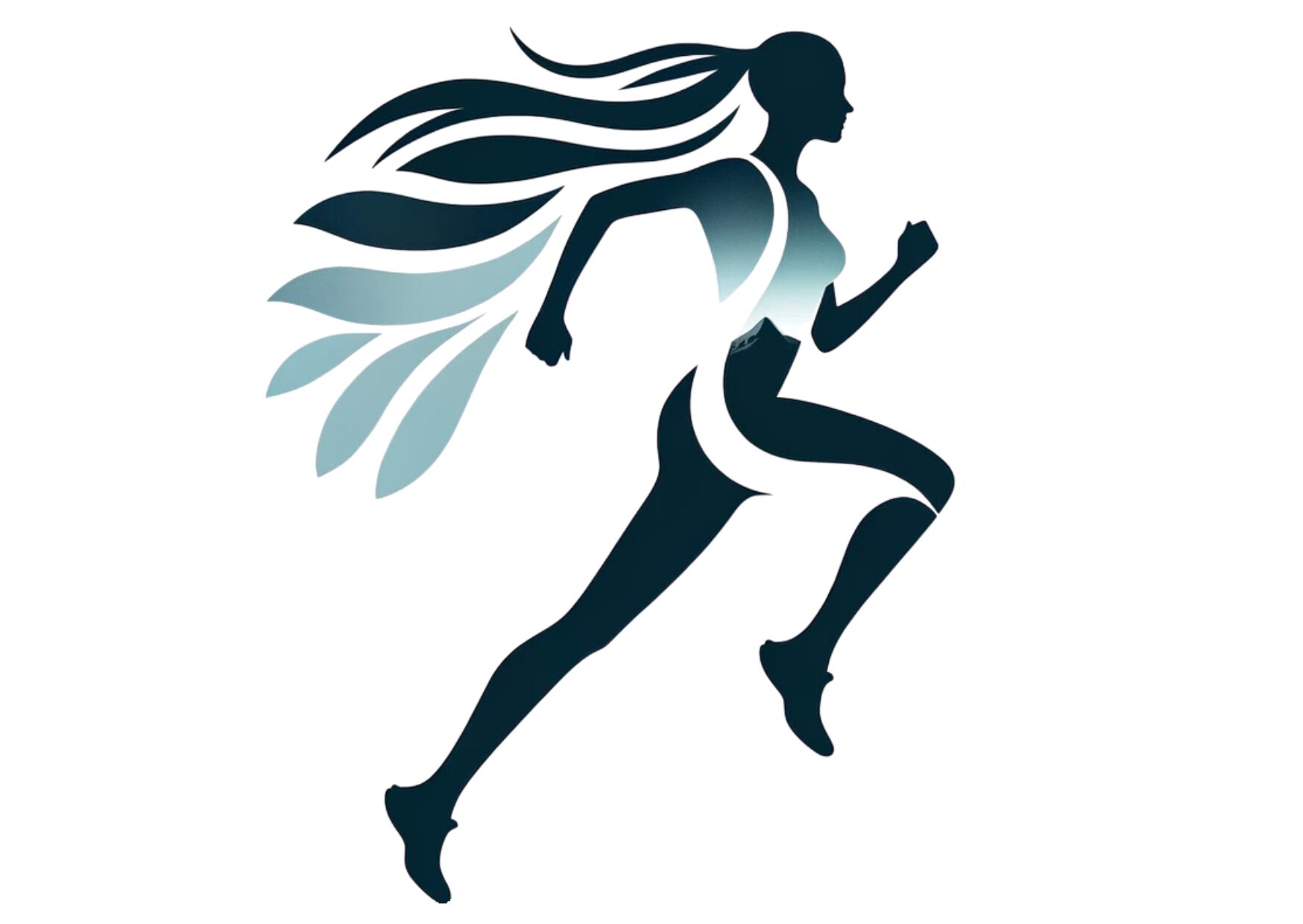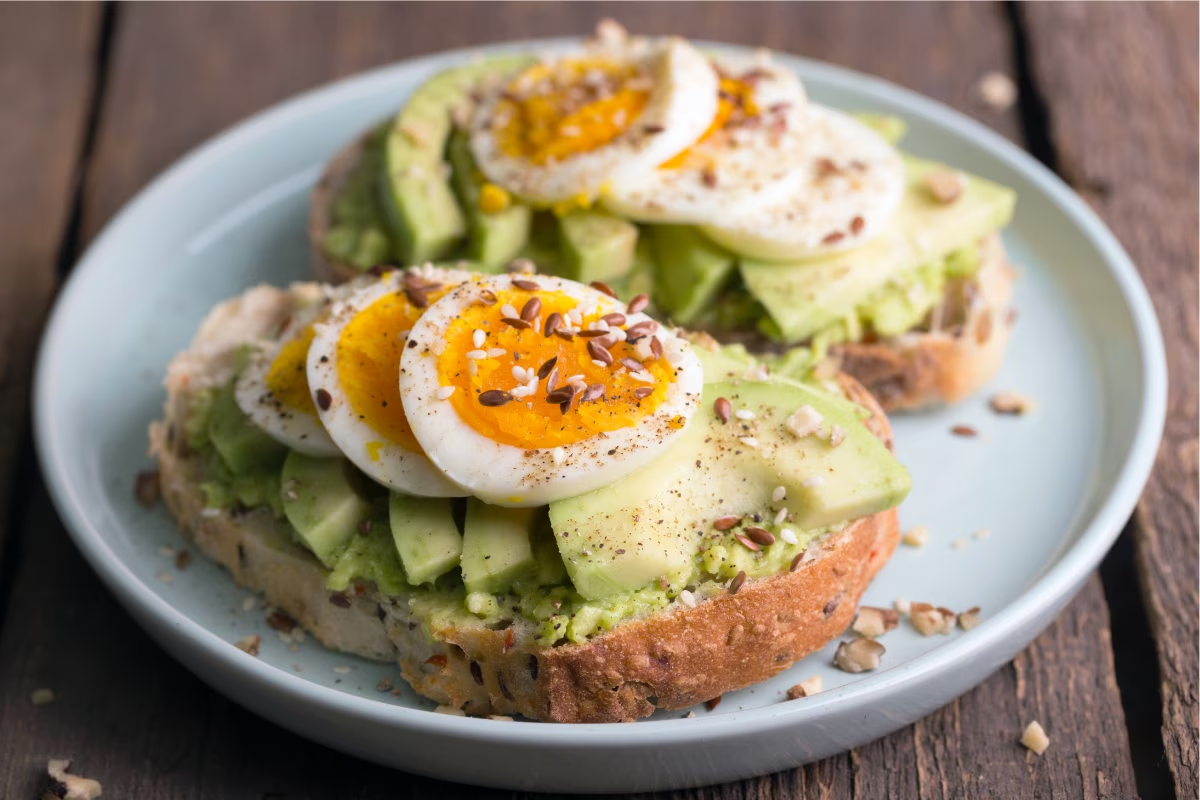When running after 40, you may need to rethink some things. It isn’t just about putting in the miles anymore. Hormones are changing. Recovery takes a little longer. New aches and pains may show up. What used to work for you might not work now. At this point, you’ll need to pay more attention to your nutrition to keep feeling energetic and strong.
As we get older, our bodies don’t process nutrients the same way they used to. That’s why fueling your long run and recovering from it, takes a little more care. You may need more protein to maintain muscle, more magnesium to reduce soreness, and a little extra sodium to stay hydrated during your long efforts.
In this post, I’ll walk you through how to fuel your body on a long run or race day. While the balance of nutrients before and after your run is slightly different, it’s not a dramatic shift.
Before the Run (2–3 hours prior):
Your focus is on energy. You want a meal that fills up your glycogen stores and gives you long-lasting fuel without upsetting your stomach.
- Carbohydrates: 60–70%
- Protein: 10–15%
- Fat: 15–20%
After the Run (within 30–60 minutes):
Now the goal is recovery, replenishing energy and helping your muscles repair and rebuild.
- Carbohydrates: 50–60%
- Protein: 20–25%
- Fat: 15–20%
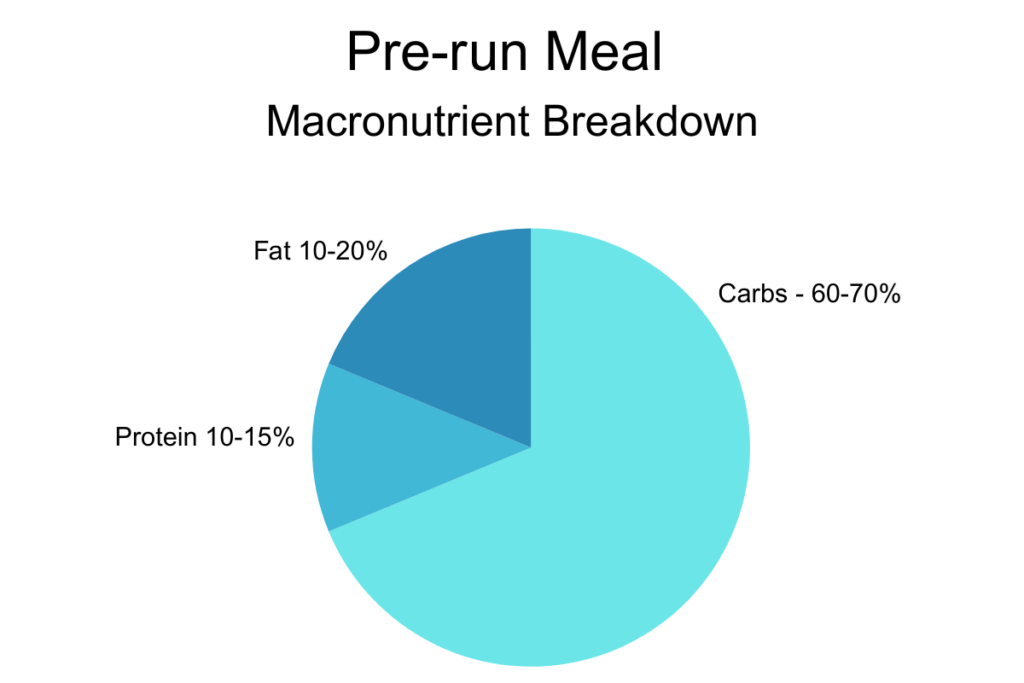
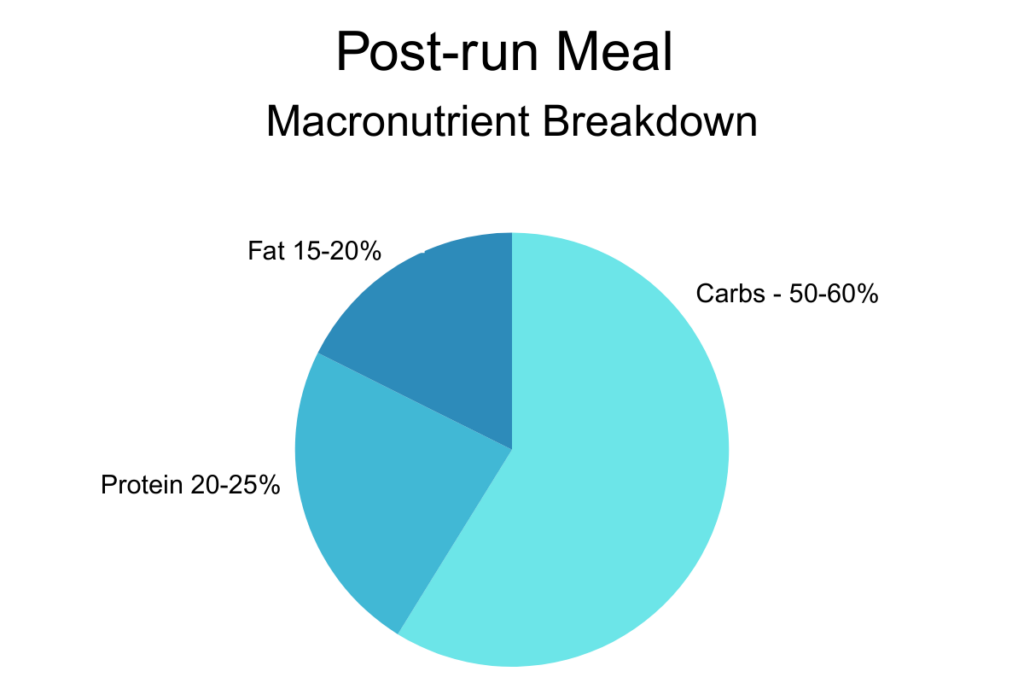
Before the Run: Build Energy Without the Tummy Upset
You want your pre‑run fuel to do three things: boost glycogen, avoid digestion issues, and give you long-lasting energy. For long runs (90 minutes or more), aim to eat 2-3 hours beforehand. Women’s Running+2Utah State University Extension+2
This meal should be satisfying but not heavy. It should be mostly made up of slow-releasing carbs like oats, whole grain toast, rice, or sweet potatoes. These kinds of carbs break down gradually over a few hours, helping to keep your blood sugar stable and energy levels strong during your run. Add a little protein (like yogurt, eggs, or nut butter). This can help balance the meal and make the energy last longer, but keep it on the smaller side. The meal should still be mostly carbs. Also, you’ll want to avoid too much fat or fiber, since they can slow digestion and sit uncomfortably once you start moving.
Generally, the macronutrient breakdown should be:
- Carbohydrates: 60–70%
- Protein: 10–15%
- Fat: 10–20%
The focus is on easily digestible, mostly carb-based foods with just a little protein and fat to stabilize blood sugar and extend energy.
Think of this meal as setting the tone for your long run or race. It should leave you feeling energized, not stuffed, and ready to run for hours without crashing.
Meal ideas pre-run
Here are a few simple pre-run breakfast examples that fits those macros:
Oatmeal
- 1 cup cooked oatmeal
- 1 sliced banana
- 1 tablespoon peanut butter
- 5 almonds for the crunchy effect if you like
- Optional: small spoonful of honey or sprinkle of cinnamon
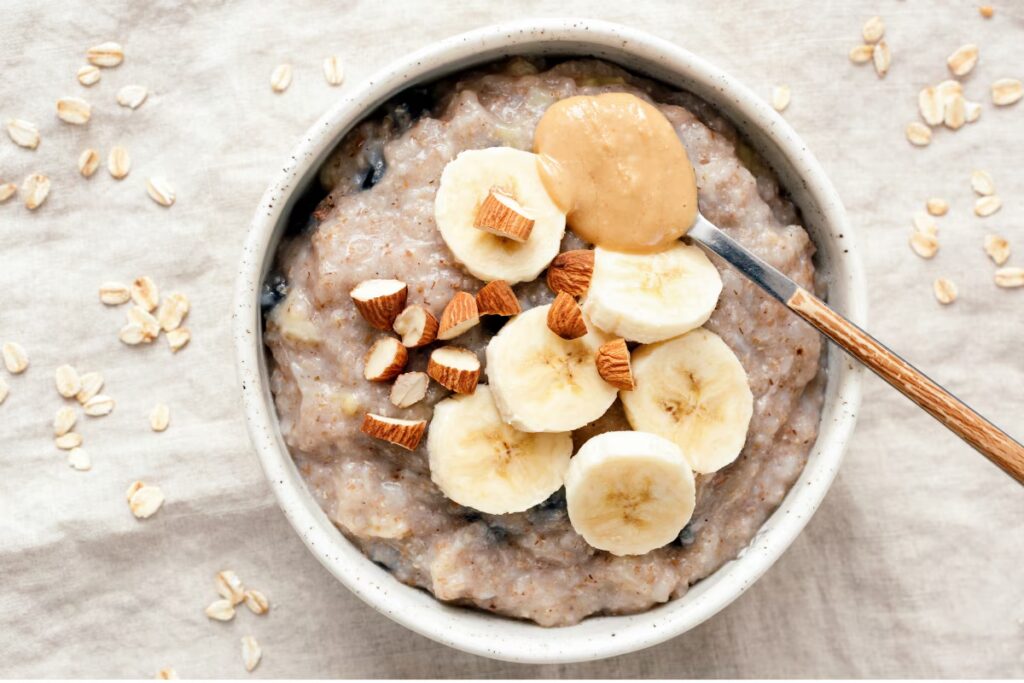
Greek Yogurt/Skyr Bowl
- 1 cup Greek yogurt or skyr (plain or lightly sweetened, low fat if digestion is sensitive)
- ½ cup granola or muesli (look for one with oats and dried fruit)
- 1 sliced banana
- Optional: 1 tsp honey or maple syrup
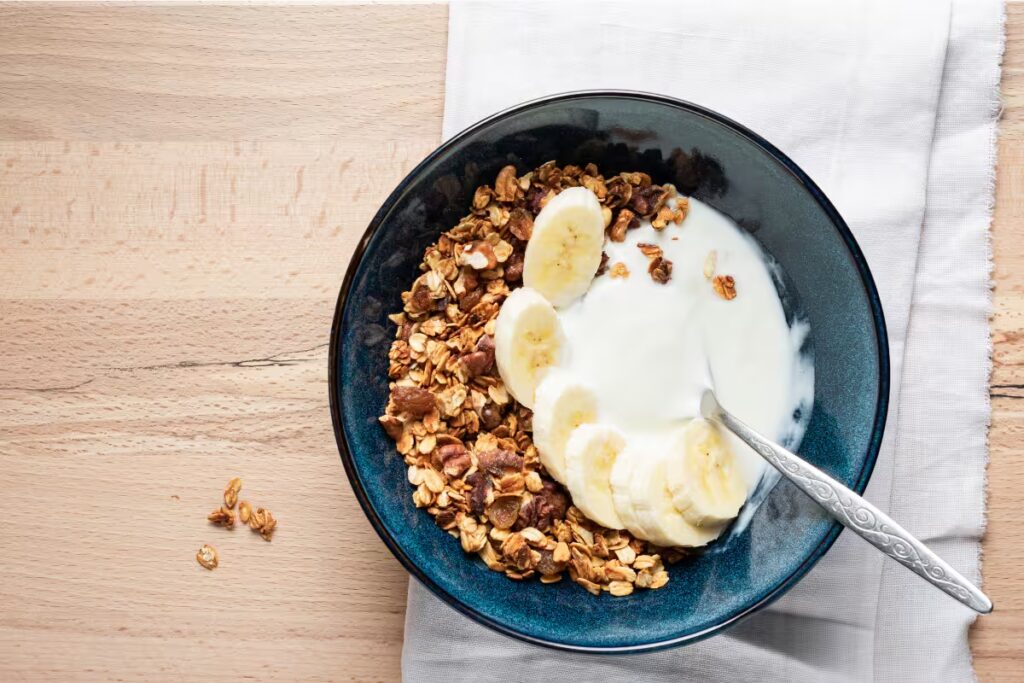
Toast with Peanutbutter and jelly

Rice or pasta with chicken

These meals are gentle on the stomach, provide steady energy, and keep you fueled into the early stages of your run. They may not be enough on their own, so many runners combine two—for example, Greek yogurt and two slices of toast with peanut butter and jelly.
Hydration
Hydration pre-run matters a lot too. Drink enough water with electrolytes in the hours before so you’re not starting dehydrated. Be careful in the last two hours before the run, though. If you drink too close to the start, you’ll have to pee mid-run, and that’s always annoying. I try to drink 500 ml of fluids 2-3 hours before the run. Then, almost nothing in the last 2 hours before starting. That strategy works for me.
During the Run: Keep Going Strong
Most runners will need to fuel during the run once it becomes longer than 60-75 minutes STYRKR+1. At this time, your body’s stored energy (the glycogen in your muscles and liver) starts to run low so you have to refill it regularly. Usually in the form of quick carbs like gels or sports drinks so you don’t hit a wall or feel drained before you’re done.
What to aim for:
- 30‑60 grams of carbohydrate per hour for most runners during long runs. If the run is very long or very hard, you might benefit from up to 90 grams/hour, but only if your stomach tolerates it. STYRKR+1
- Easy digestible carbs: gels, chews, sports drinks, maybe a banana or small bar if that works for you. Practice this during training so your gut gets used to it.
Most energy gels contain around 20 to 25 grams of carbohydrate per packet. But check the label, some brands vary slightly depending on flavor or added electrolytes. But as you can see, you’ll need quite many energy gels to stay fueled and both you and your stomach are not always very happy about that.
In addition to gels, I recommend the energy powders that you add to your drink as well as some energy bars, banana, and candies. Really anything that provides fast acting carbs. It’s up to you to try out what works best for you.
Mid-Run Fueling Chart
| Duration | Carbs per hour | Example Fuel |
|---|---|---|
| 60–90 min | Optional | 1 gel or sports drink |
| 90–120 min | 30–60g/hour | 1–2 gels, carb drink, banana |
| 120+ min | 60–90g/hour | Gel + drink + bar/chews |
Hydration During Your Long Run
Sip water or electrolyte drinks regularly throughout your run, especially if you’re sweating a lot. A general rule is to aim for a few sips — about 100–200 ml (3–6 oz) — every 15–20 minutes. Don’t chug a whole bottle at once, it will make you feel bloated and uncomfortable, and it can also slosh around in your stomach while you run. Small, steady sips are easier on the stomach and help keep you hydrated and comfortable.
In hot or humid weather, your sweat rate increases, and you lose more sodium, so adding electrolyte tablets or drink mixes becomes more important. If you’re running longer than 90 minutes in warm conditions, plan ahead, either carry a bottle, use a hydration vest, or map out water stops.
And remember: thirst is a lagging signal. By the time you feel really thirsty, dehydration has probably already begun. Stay ahead of it.
After the Run: Recover, Rebuild, and Refuel
Recovery nutrition is where you help your body adapt and get stronger, not just rest.
As women age, protein becomes extra important (for protecting muscle mass) and fueling must support overall energy needs without undercutting recovery. RunningPhysio. Maintain a mix of carbs, proteins, and healthy fats. Carbs still provide the fuel; proteins help you rebuild; fats support hormones and satiety.
Try to eat a snack or meal with carbs + protein within 30 minutes after finishing your run. This helps replenish glycogen, repair muscle, and reduce soreness. Mayo Clinic Health System+1
If you can’t have a full meal right after your long run, a quick snack within 30 minutes can still kickstart recovery by replenishing glycogen and supporting muscle repair. Aim for a combo of carbs and protein, ideally in a 3:1 or 4:1 ratio.
Post run snack ideas:
Chocolate milk
A classic! It has the right carb-to-protein ratio, hydrates, and is easy to get down even if you’re not super hungry or if your appetite is low because of the strain of the exercise.
Banana + small handful of nuts
The banana gives fast-acting carbs; the nuts add a little protein and fat to tide you over.
Protein shake + a piece of fruit
Quick to prepare and absorb. Great if you want something light and portable.
Half a PB&J sandwich
The bread and jelly give you carbs, the peanut butter gives you protein and fat — a great post-run combo.
Greek yogurt with honey or fruit
Yogurt gives you protein, carbs, and a little fat; fruit or honey adds quick energy.
Meal Ideas Post-Run
Here are a few balanced, recovery-boosting post–long run meals that are especially great for women over 40 — combining carbs to refuel, protein to repair, and a bit of healthy fat to support hormones and satiety:
Eggs + Whole Grain Toast + Avocado
- 2–3 eggs (boiled, poached, or scrambled)
- 1–2 slices whole grain toast
- ¼ avocado
Packed with protein, complex carbs, and healthy fats.
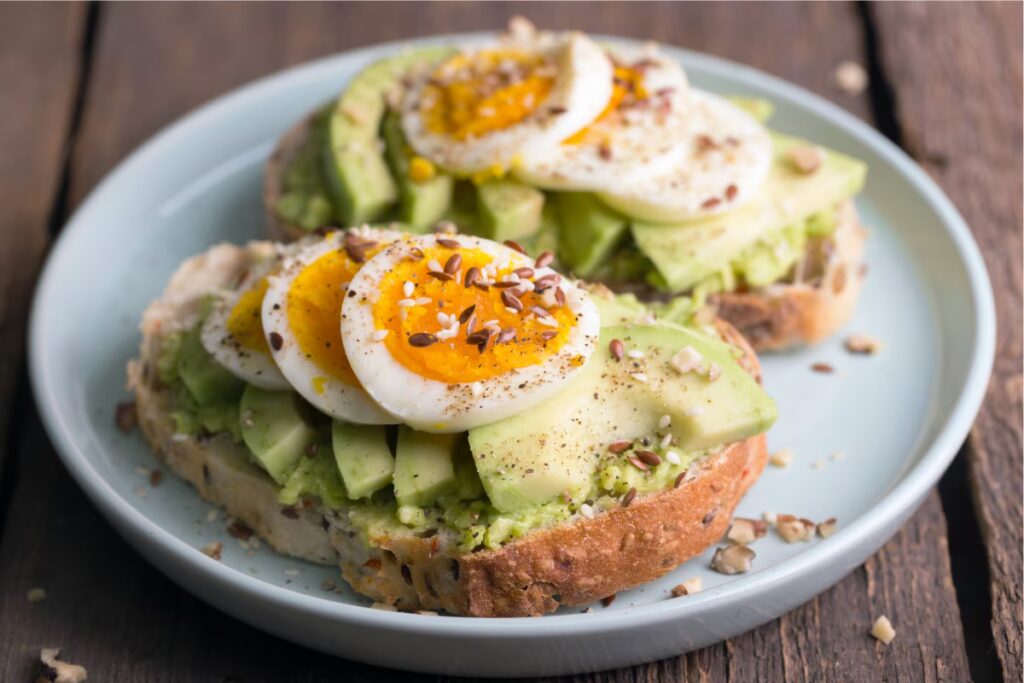
Protein Smoothie with Fruit + Oats
- Scoop of protein powder or Greek yogurt
- Banana + berries
- ¼ cup oats or nut butter
- Optional: flaxseed or chia
Quick, easy to digest, and full of anti-inflammatory nutrients.
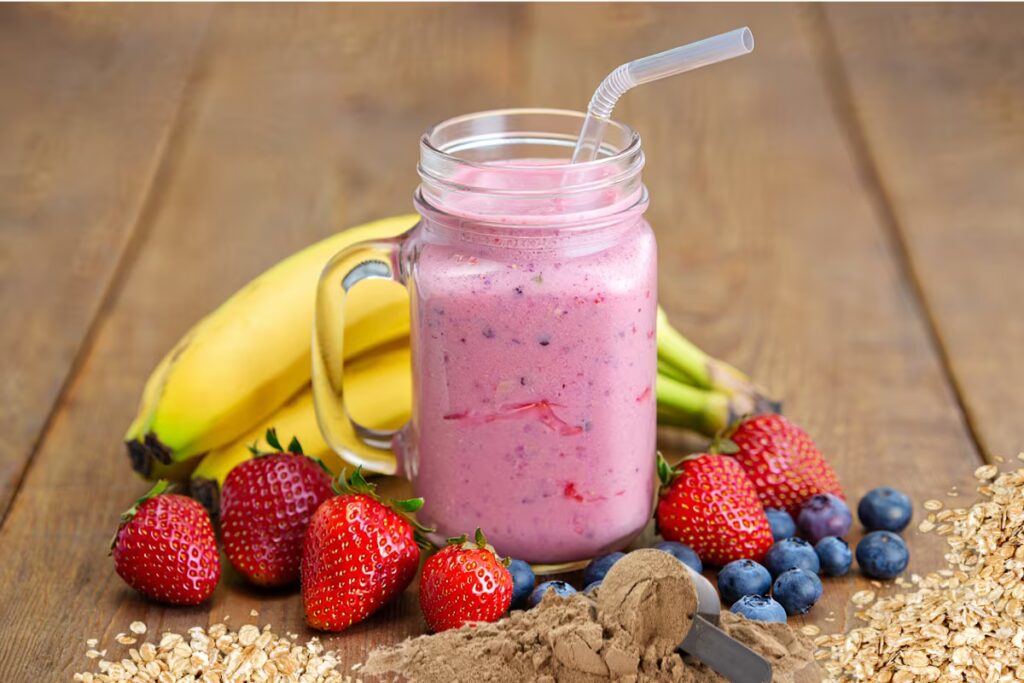
Turkey or Chicken Sandwich + Fruit
- Sliced turkey/chicken breast
- Whole grain bread or wrap
- Leafy greens + hummus or mustard
- Apple or orange on the side
A hearty and satisfying option with lean protein, carbs, and hydration from fruit.
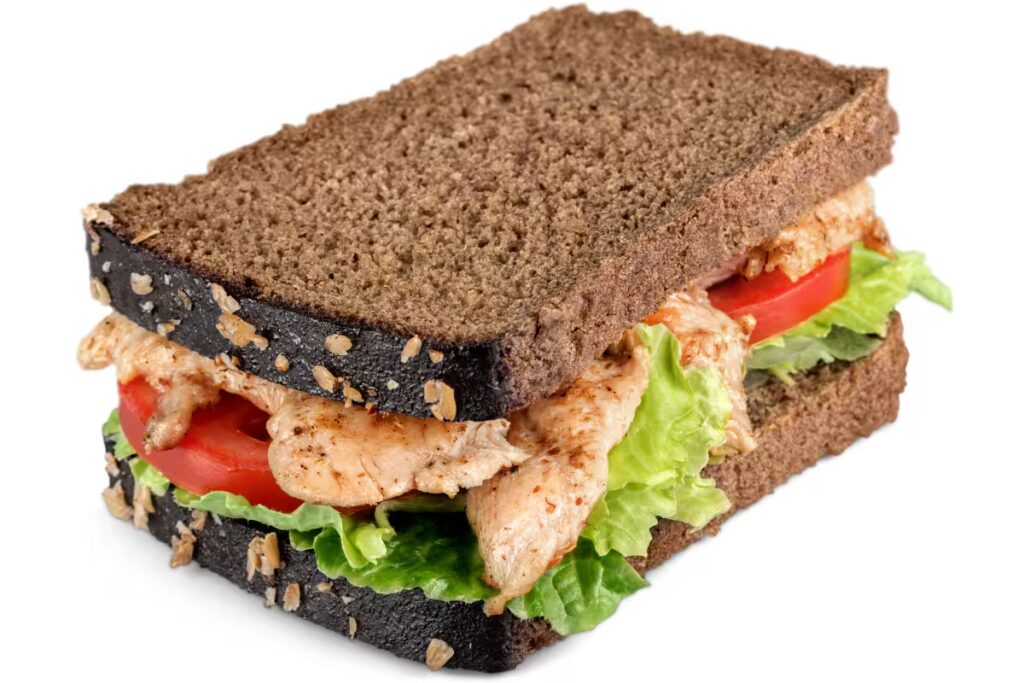
Rice Bowl with Salmon or Tofu + Veggies
- Brown or white rice
- Grilled salmon, tofu, or tempeh
- Steamed or roasted veggies
A full meal for longer recovery periods. Omega-3s from salmon help reduce inflammation after tough efforts.
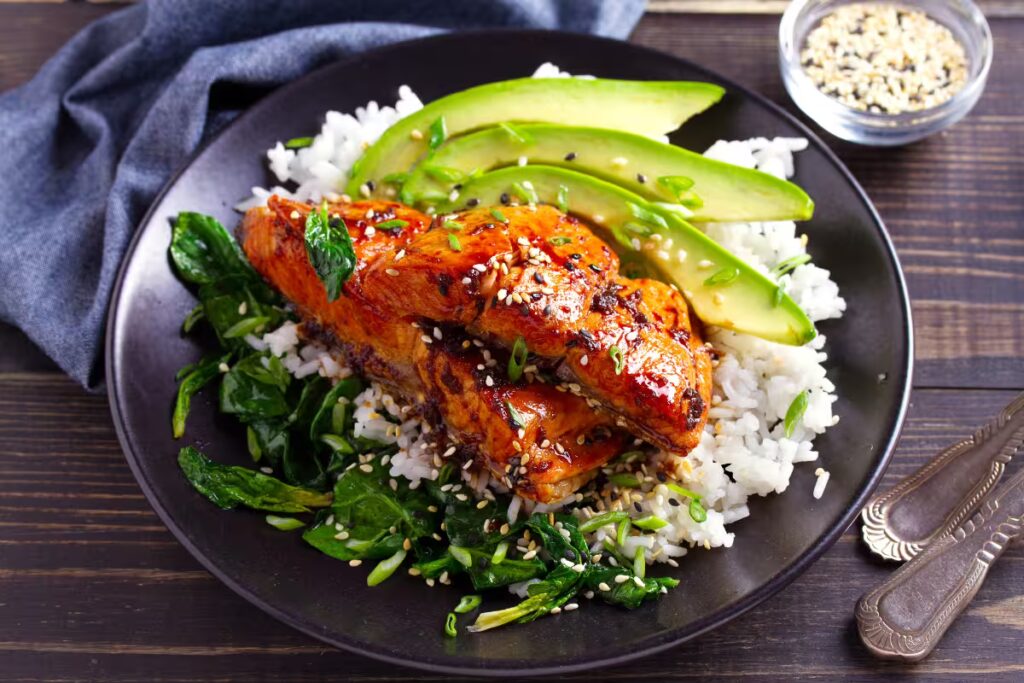
Adjustments to Consider After 40
As we age, our nutritional needs change, and if you’re a woman over 40 who runs, especially if you’re doing long runs or strength training, you’ll probably need to make a few tweaks to keep feeling your best.
One of the biggest changes is that protein needs go up. As estrogen declines, your body becomes less efficient at maintaining and building muscle. To support recovery and strength, aim for around 1.4 to 1.8 grams of protein per kilogram of body weight per day. So if you weigh 65 kg (about 143 lbs), you’re looking at roughly 90 to 115 grams of protein daily.
Here are a few other changes to be aware of:
- Digestion can slow down a bit, and you may find yourself more sensitive to certain foods. Something that worked great before might suddenly cause GI issues on the run. Test and adjust.
- Muscle loss happens faster, so it’s extra important to get enough high-quality protein throughout the day, not just after workouts.
- Recovery takes longer. Hormonal shifts mean your body may need more rest and sleep. No amount of fueling can fully make up for skimping on recovery.
- Metabolism shifts, too. Some women unintentionally under-eat, thinking it will help with weight control, but that can backfire. Not eating enough (especially after long runs) can slow your metabolism and make recovery harder. On the flip side, consistently overeating after workouts can also stall progress. Finding the right balance is key.
Final Take
Many women unknowingly under-fuel, especially runners. If you’re logging long miles but not eating enough to match that energy output, your body starts to struggle. You might feel unusually tired, sore for days, or notice your pace slowing down even though you’re training consistently. That’s a sign of low energy availability — when your body doesn’t have enough fuel left over after exercise to support basic functions. Over time, this can mess with your hormones, lead to poor recovery, disrupt your menstrual cycle, weaken your bones, and even affect your immune system. Running after 40 already comes with a few extra challenges, and not eating enough only makes it harder to stay strong, recover well, or see progress. Fueling properly isn’t just about performance — it’s about protecting your long-term health.
Running after 40 is one of the strongest things you can do for your body—but it’s not magic. If weight loss or energy still feels out of reach despite all your running, look closely at your fueling, recovery, and rest. Adjusting what you eat (and when) around your long runs, adding good recovery, and listening to your body can make all the difference.
You deserve runs that feel good, finish strong, and fuel wellness—not burnout.
References
Acker, J. (2025, May 28). What to eat before a long run to maintain your energy. Runner’s World. https://www.runnersworld.com/nutrition-weight-loss/a20853982/the-proper-way-to-fuel-before-a-long-run/
Mace, M. (2025, June 19). What to eat during a long run. STYRKR. https://www.styrkr.com/en-us/blogs/training-and-nutrition-hub/what-to-eat-during-a-long-run
Mateo, A. (2021, February 11). A female runner’s guide to eating for energy. Women’s Running. https://www.womensrunning.com/health/food/a-female-runners-guide-to-eating-for-energy/
Mayo Clinic Health System. (n.d.). Fueling strategies for distance runners. Mayo Clinic Health System. https://www.mayoclinichealthsystem.org/hometown-health/speaking-of-health/fueling-strategies-for-distance-runners
Taylor, F. (2019, March 22). Age and nutrition: How what you eat can help you age well and run better in your 40s, 50s, 60s and beyond. RunningPhysio. https://www.running-physio.com/age-and-nutrition/
